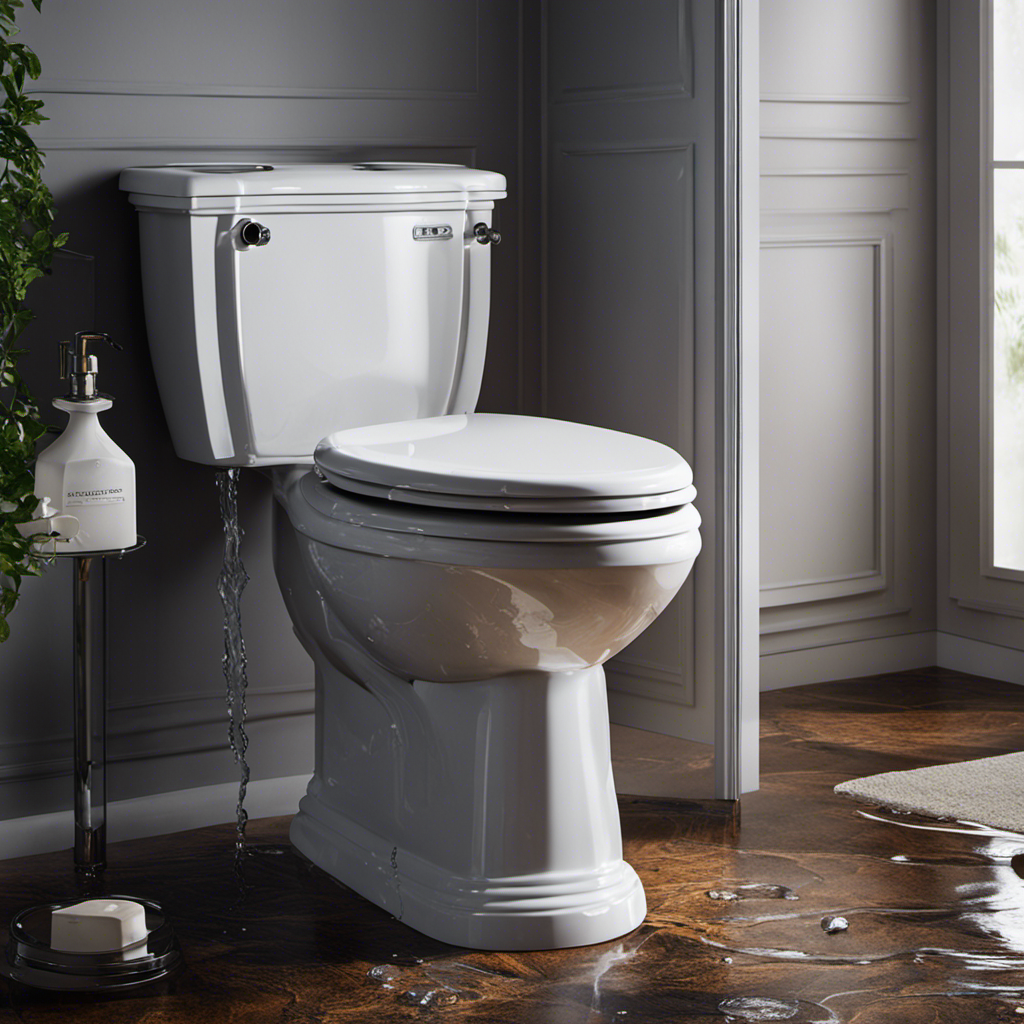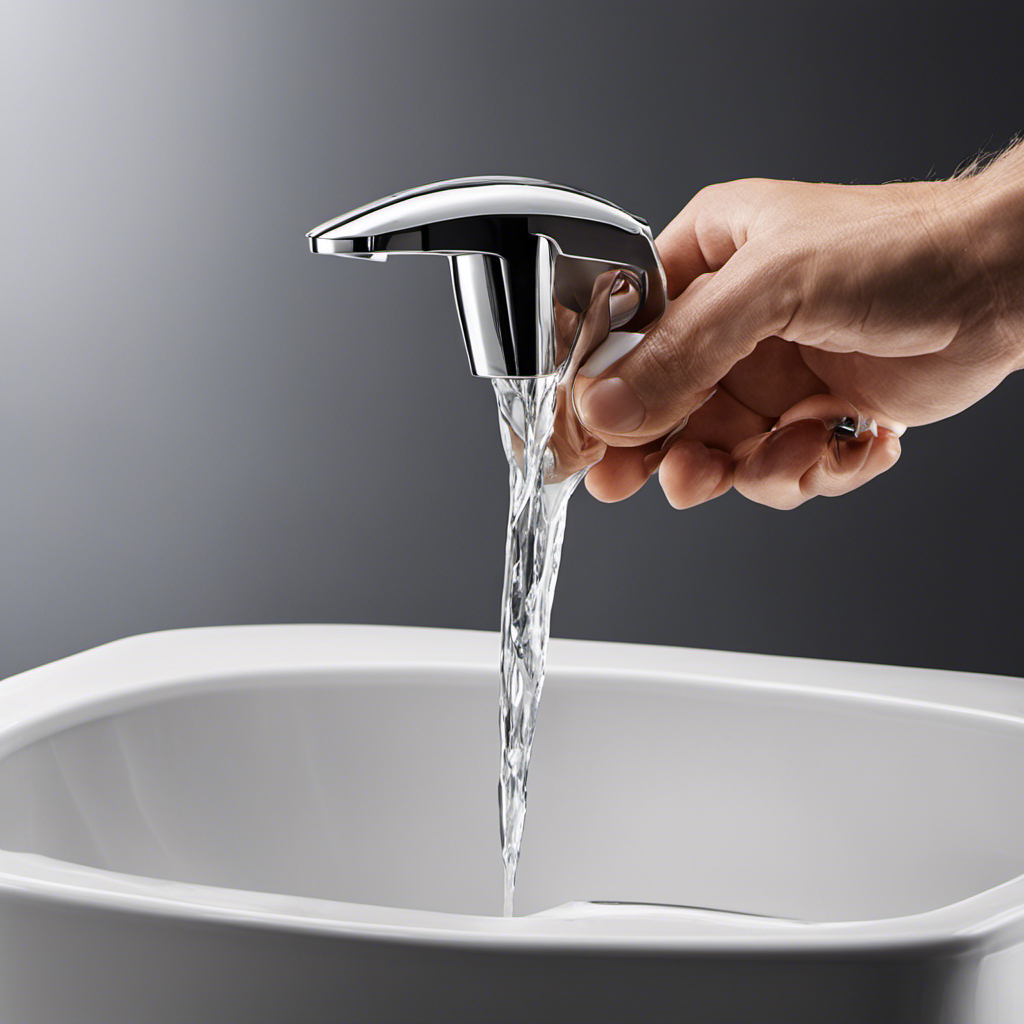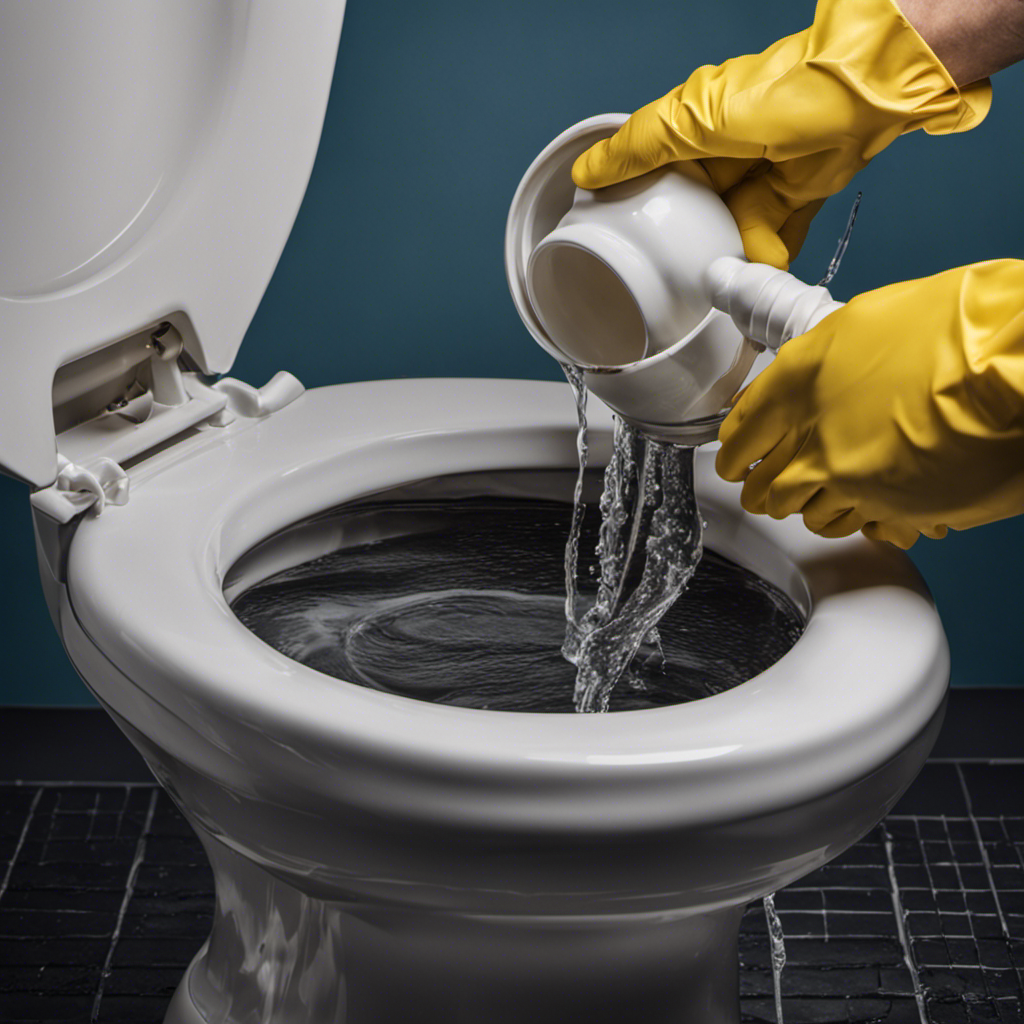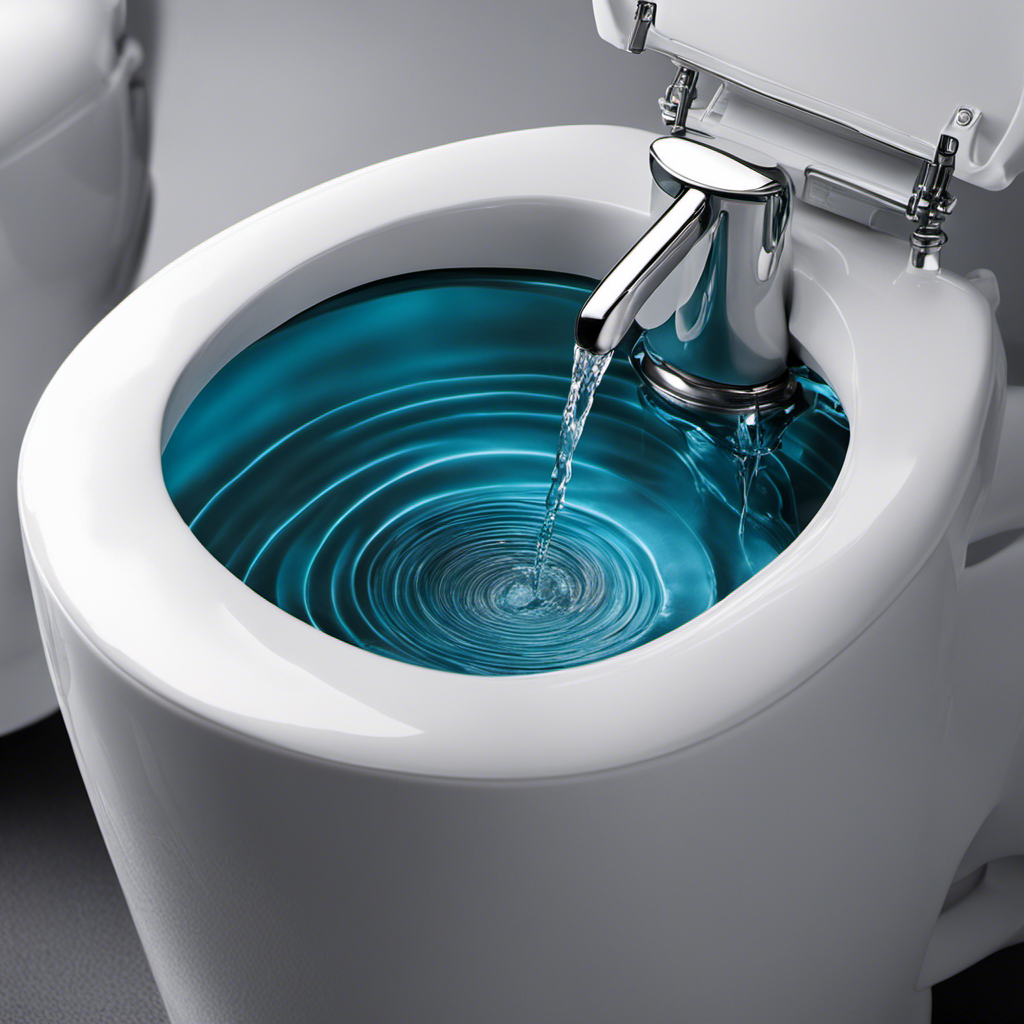As a DIY enthusiast, I’ve encountered my fair share of household mishaps, but one issue that can be particularly frustrating is a toilet tank leak. It’s like throwing money down the drain!
In this article, I’ll guide you through the process of fixing a toilet tank leak, step by step. Armed with the right tools and materials, you’ll be able to identify the source of the leak and repair it yourself. No need to call a professional – you’ve got this!
Key Takeaways
- Faulty flapper and worn or damaged flapper are common causes of toilet tank leaks.
- Signs of a toilet tank leak include constantly running toilet, water pooling around the base, and increased water usage.
- Tools and materials needed for fixing a toilet tank leak include an adjustable wrench, screwdriver, pliers, new fill valve and flapper, and silicone-based waterproof sealant.
- DIY solutions for repairing a toilet tank leak include inspecting the water supply line, tightening loose bolts, cleaning the tank, and regular maintenance to prevent potential leaks.
Common Causes of Toilet Tank Leaks
One common cause of toilet tank leaks is a faulty flapper that needs to be replaced. The flapper is a rubber valve that controls the flow of water from the tank into the bowl. Over time, the flapper can become worn or damaged, causing it to not seal properly.
This can result in water continuously leaking from the tank into the bowl, leading to higher water bills and potential damage to the surrounding area. To fix this issue, you will need to purchase a new flapper and follow the instructions provided with it to replace the old one.
Regular toilet tank maintenance, such as checking and replacing worn flappers, can help prevent leaks and ensure the efficient operation of your toilet.
Tools and Materials Needed for Fixing a Toilet Tank Leak
You’ll need a few tools and materials to repair the toilet tank’s leak.
First, you’ll need an adjustable wrench to loosen and tighten the nuts.
Next, a screwdriver will be necessary to remove any screws holding the tank together.
Additionally, you’ll need a pair of pliers to grip and maneuver any stubborn parts.
When it comes to materials, a new fill valve and flapper will likely be required to fix the leak.
It’s also important to have a good waterproof sealant on hand.
The best waterproof sealants for toilet tank repair are silicone-based, as they provide a strong and durable seal.
Keep in mind that toilet tank repair costs can vary depending on the severity of the leak and the specific materials needed.
Step-by-Step Guide to Identifying the Source of the Leak
To identify the source of the leak, start by checking the water supply line for any visible cracks or loose connections. This is an important step in preventing further damage and addressing the issue promptly.
Signs of a toilet tank leak can include a constantly running toilet, water pooling around the base of the toilet, or a noticeable increase in water usage.
Once you’ve inspected the water supply line, move on to examining the tank components. Check the fill valve and flapper for any signs of wear or damage. A faulty fill valve or worn-out flapper can also cause leaks.
Additionally, inspect the tank bolts and gasket for any signs of corrosion or deterioration.
Repairing a Toilet Tank Leak: DIY Solutions
Inspecting the water supply line and checking for visible cracks or loose connections is a crucial step in addressing and resolving the issue of a leaking toilet tank. By ensuring that the water supply line is securely connected and free from any damages, you can prevent future leaks and maintain the proper functioning of your toilet tank. In addition to this, regular toilet tank maintenance is essential to prevent any potential leaks. This includes checking and tightening any loose bolts, inspecting the flapper valve for any signs of wear or damage, and cleaning the tank to remove any mineral deposits or debris that may interfere with the proper functioning of the toilet. By following these steps and implementing regular maintenance, you can keep your toilet tank in optimal condition and prevent future leaks.
| Toilet Tank Maintenance | Preventing Future Leaks |
|---|---|
| Inspect water supply line for cracks or loose connections | Regular maintenance is key |
| Tighten any loose bolts | Check and replace flapper valve if necessary |
| Clean tank to remove mineral deposits or debris | Ensure proper water level in tank |
| Check for signs of wear or damage | Regularly inspect for leaks |
When to Call a Professional for Toilet Tank Leak Repair
If the issue persists or if you’re unsure about how to proceed, it may be time to consider contacting a professional for assistance with your toilet tank leak.
While some toilet tank leaks can be fixed with simple DIY solutions, there are certain signs that indicate a more serious problem that requires the expertise of a plumber.
One sign of a serious toilet tank leak is a continuously running toilet, even after attempting to fix it yourself.
Another sign is a noticeable increase in your water bill, which could indicate a hidden leak that needs professional attention.
Additionally, if you notice water pooling around the base of your toilet or a persistent dampness in the surrounding area, it’s best to hire a plumber to assess and repair the issue.
Frequently Asked Questions
How Often Should I Check for Toilet Tank Leaks?
I check for toilet tank leaks regularly as part of my preventive measures. It’s important to be proactive in identifying signs of toilet leaks, such as water stains or constant running water.
Can a Toilet Tank Leak Cause Water Damage to My Bathroom Floor?
Yes, a toilet tank leak can cause water damage to my bathroom floor. I once had a small leak that went unnoticed, leading to a soaked and damaged floor. Prompt toilet tank leak repair is crucial to prevent further damage and expenses.
Are There Any Temporary Fixes for a Toilet Tank Leak?
There are some quick fixes for a toilet tank leak, but it is important to identify the common causes to prevent further damage. It is vital to address the issue promptly to avoid water damage.
Can a Toilet Tank Leak Lead to Higher Water Bills?
Yes, a toilet tank leak can lead to higher water bills. It is important to detect and repair toilet tank leaks promptly to prevent unnecessary water waste and increased costs.
Is It Possible to Prevent Toilet Tank Leaks From Occurring in the First Place?
Preventing toilet tank leaks is crucial. By taking preventive measures such as regular maintenance and inspection, you can avoid the inconvenience and potential damage caused by leaks. Understanding common causes helps in implementing effective preventive strategies.
Conclusion
In conclusion, addressing a toilet tank leak may seem like a daunting task, but fear not! With the right tools and a step-by-step approach, you can easily identify and fix the source of the leak.
Don’t hesitate to tackle the problem yourself, but remember to call in a professional if needed.
By taking action, you can ensure a smoothly flowing bathroom experience.
So, go forth and conquer that leak!










